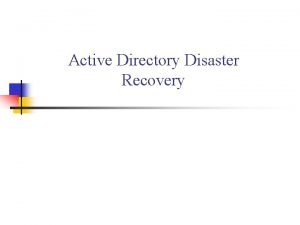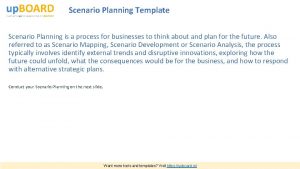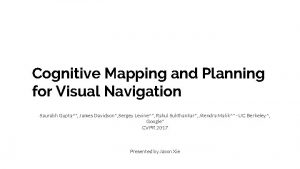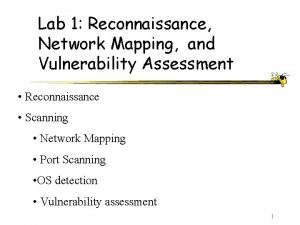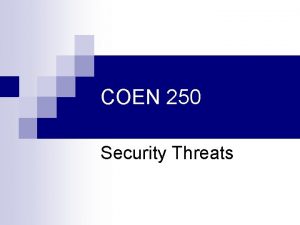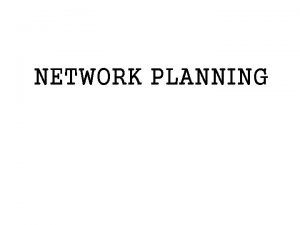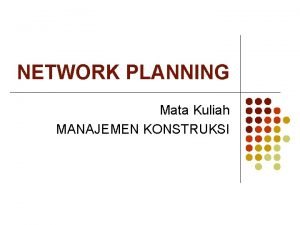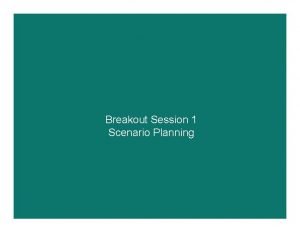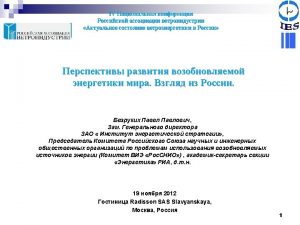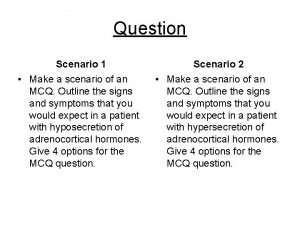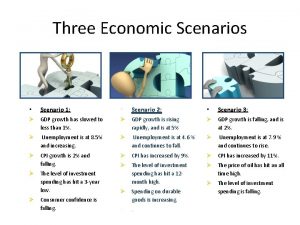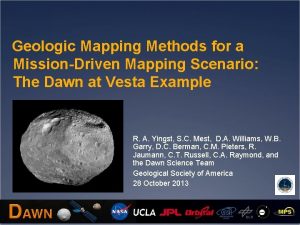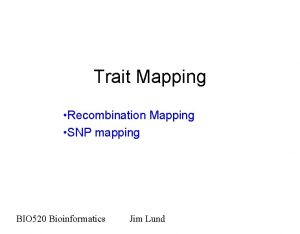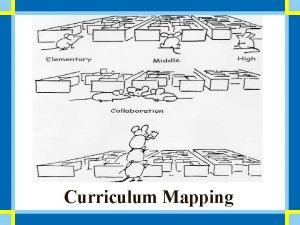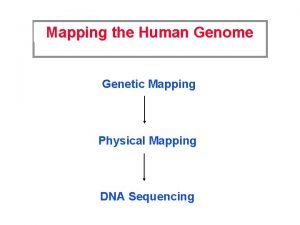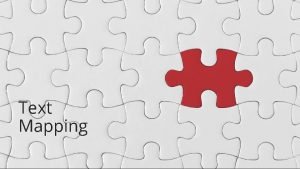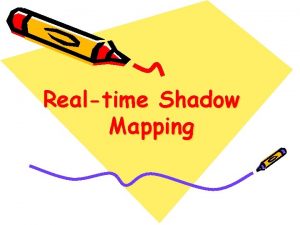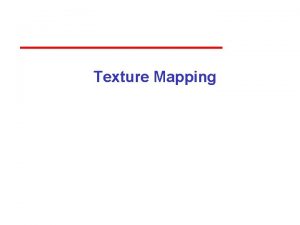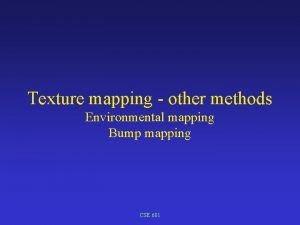From scenario planning to scenario network mapping Dennis


















- Slides: 18

From scenario planning to scenario network mapping Dennis List ECIC, University of Adelaide NZSSES Conference, February 2006

Outline of presentation • This presentation will cover four approaches to scenario planning – three conventional, and one new. • Conventional: expert scenarios • Conventional: standardized scenarios • Conventional: critical uncertainties method • New: scenario network mapping (from DL)

Theoretical basis of scenarios • This is a slide for academics (others: look away!) • Not a solid basis of theory. But Wendell Bell’s Foundations of Futures Studies (1997) attempts this from one angle, my thesis (2005) from another. • Difficult to apply theoretical orientation (“Why…”) to the future. • First used by RAND institute for anticipating World War III etc. Originator: Herman Kahn (caricatured as Dr Strangelove in the film of that name).

Conventional methods Conventional scenario methods share these attributes: > Usually 3 or 4 scenarios, minimum 2, maximum 7. > Each scenario is elaborated in quite a lot of detail – typically 5 to 10 pages. > Each scenario is quite separate – they don’t interlink. > Snapshots of future states – not chains.

Conventional scenario diagram Scenario Now Scenario Time

Expert scenarios (1) An 8 -step method made famous in the 1970 s by Shell Oil, and written up by Peter Schwartz in his 1991 book The Art of the Long View. 1. Identify the issue - seems obvious, but vital to get correct scope; often too narrow. 2. Identify key factors in the future of that issue. 3. Identify broad driving forces (e. g. demographics, trends, technologies) - “unstoppable forces”. 4. Rank key factors and driving forces on uncertainty and potential impact.

Expert scenarios (2) 5. Develop scenario logics. Trial and error process, till broad scenarios are logically cohesive. 6. Develop scenario details - flesh out scenarios in relation to items 2 and 3 above. Ensure plausibility. 7. Consider implications. Run current issues for decision through each scenario - feasible? Vulnerable? High-risk? 8. Identify leading indicators that will tell if an anticipated scenario is unfolding.

Standardized scenarios In scenario work, some sets of scenarios occur over and over again – so why not assume they will apply in any new case? Some of the perennial scenarios: v “Business as usual” (never eventuates) v An ideal situation (for the organization commissioning the scenarios) v Doomsday situation.

Critical uncertainties (1) Now the most common method, perhaps because simple instructions exist – no experts needed. (But that’s a trap, too. ) Step 1. List trends and situations likely to affect the entity being studied. Step 2. Group them in a 2 x 2 matrix: critical / not critical BY more certain / uncertain Step 3. From the uncertain & critical quadrant, choose the 2 or 3 most important trends etc. These form the axes for the scenarios.

Critical uncertainties (2) Step 4. If you chose 2 variables (A and B), now create a 2 x 2 matrix of these, with 4 quadrants… High B High A Low B

Critical uncertainties (3) Step 5. Each quadrant represents a scenario. Example: future of IT in 2000, by Doug Randall in Long Range Planning (1997). Axes were: a. Interactive vs passive computing b. Mass use vs minority use The 4 scenarios were: - Web Worlds: interactive, mass appeal, entertaining - Nano-segmentation: passive: specialized minority use - Crumbling walls: passive: integration of content with media - Wild web: interactive, chaotic, lawless And the outcome?

Problems with conventional scenarios • As with Randall example, often all scenarios apply simultaneously. • No interconnections between scenarios - each is a separate “world”. • Too cumbersome (Shell takes >1 year to develop) and inflexible. • Therefore not easily changed to match unexpected circumstances. • Maybe better to try a completely different approach. . .

Scenario network mapping • Many small scenarios, instead of a few large ones (easily replaced or modified) • Emphasis on interlinking, not stand-alone • Relatively quick and easy to develop • Time-related chaining is important - concept of event trees adapted from development evaluation • Scenarios begin in the past (present is uncertain) • Pathways rather than large scenarios • Includes multiple backcasting and futures wheel

Basic unit: the event tree • Each putative event / trend / situation has multiple causes and multiple effects • Event trees can be linked together A A B Event B A B

From event trees to a network Multiple starting points Multiple endpoints Branching input and output nodes (event trees)

Mapping the scenarios • A scenario network map is a linked collection of events. • Typically collect about 200 events, and summarize to about 40 -50, grouped into several pathways - which can be similar to standardized scenarios - e. g. for a service club they were grouped as continuation, adaptation, and transformation. • Scenarios (event trees) can be briefly explained, as the links provide detail.

A 3 -layered network • Each link is now explored. Principle: the human future is driven by humans. • How exactly would event A lead to event B? What actor group could make it happen? What means could they use? And why would they do it? • 2 nd layer down (below events) = motives, intentions, drivers. • Bottom layer = where those motives come from: worldviews, values, perceptions & misperceptions • Similar to Causal Layered Analysis (Inayatullah).

Example: Iraq war (beforehand) Sept 2001 attacks on US A US worries about more attacks US threatens Iraq B J More rogue states emerge Other powers put sanctions on US US loses [unlikely] AE O C I Al Qaida blamed D E Afghan régime ousted Iraq doesn’t comply (enough) H Gulf war 1991 US attacks Iraq K Successful US colony P L Iraq defies sanctions Q L U Troublesome US colony Terrorism increases Z W AB US bombs Iran, Libya, Syria. . . X AA Some rogue states reform AF AC Terrorism lessens V F G Sanctions on Iraq Other countries mediate M R Iraq complies without war Unrest among Kurds X and Shiites US military attention tied up AG AH Unrelated crisis occurs Y T N US loses interest in Iraq Feb 2003 S Saddam stays on Iran and Turkey drawn into the conflict AD Iraq split into 3: Sunni, Shia, Kurd Anti-US coup in another country
 Scenario planning workforce planning
Scenario planning workforce planning The associative mapping is costlier than direct mapping.
The associative mapping is costlier than direct mapping. Forward mapping vs backward mapping
Forward mapping vs backward mapping Prinsip analisis dan desain
Prinsip analisis dan desain Ad disaster recovery
Ad disaster recovery Scenario planning template
Scenario planning template Cognitive mapping and planning for visual navigation
Cognitive mapping and planning for visual navigation Network mapping reconnaissance
Network mapping reconnaissance Whoiis ip
Whoiis ip Strategic planning vs tactical planning
Strategic planning vs tactical planning Goal achievement matrix
Goal achievement matrix Proactive planning and reactive planning
Proactive planning and reactive planning Perencanaan agregat
Perencanaan agregat Long term plan and short term plan
Long term plan and short term plan Corpus planning definition
Corpus planning definition Aggregate capacity planning
Aggregate capacity planning Aggregate planning is capacity planning for
Aggregate planning is capacity planning for Contoh diagram network planning
Contoh diagram network planning Simbol anak panah putus-putus dalam network planning adalah
Simbol anak panah putus-putus dalam network planning adalah




